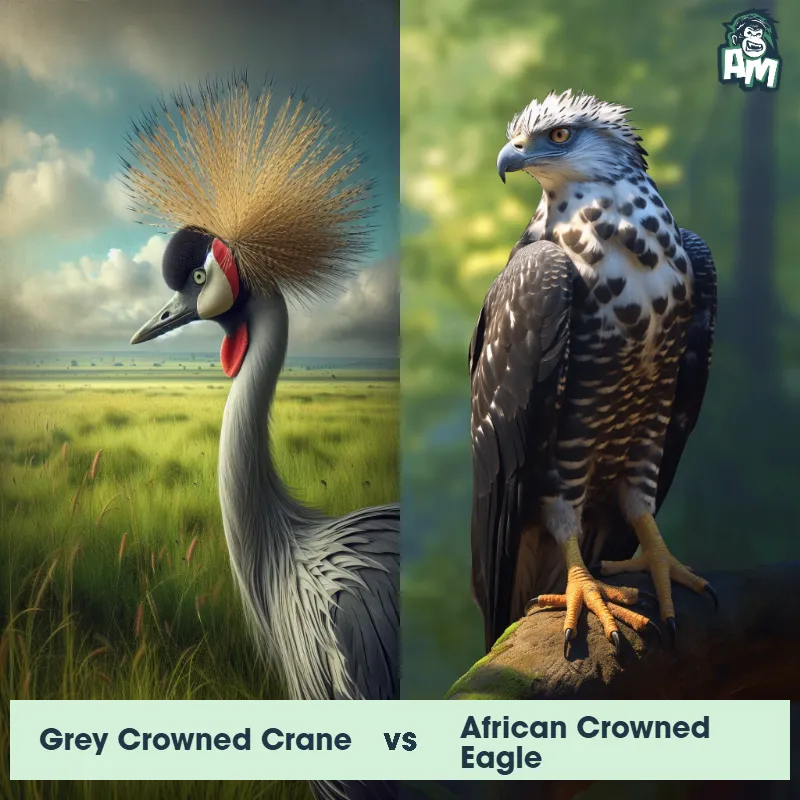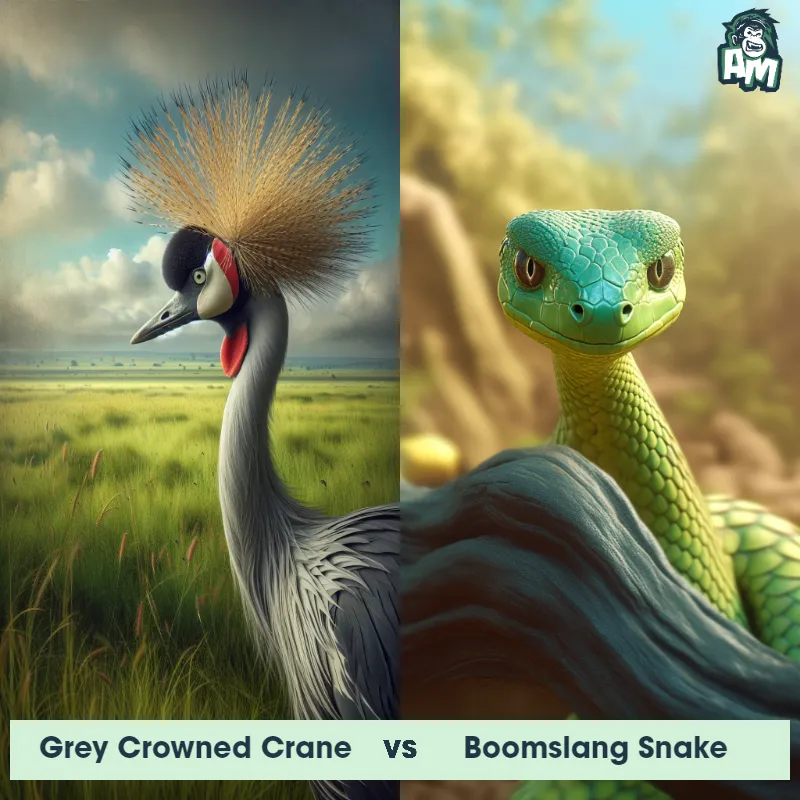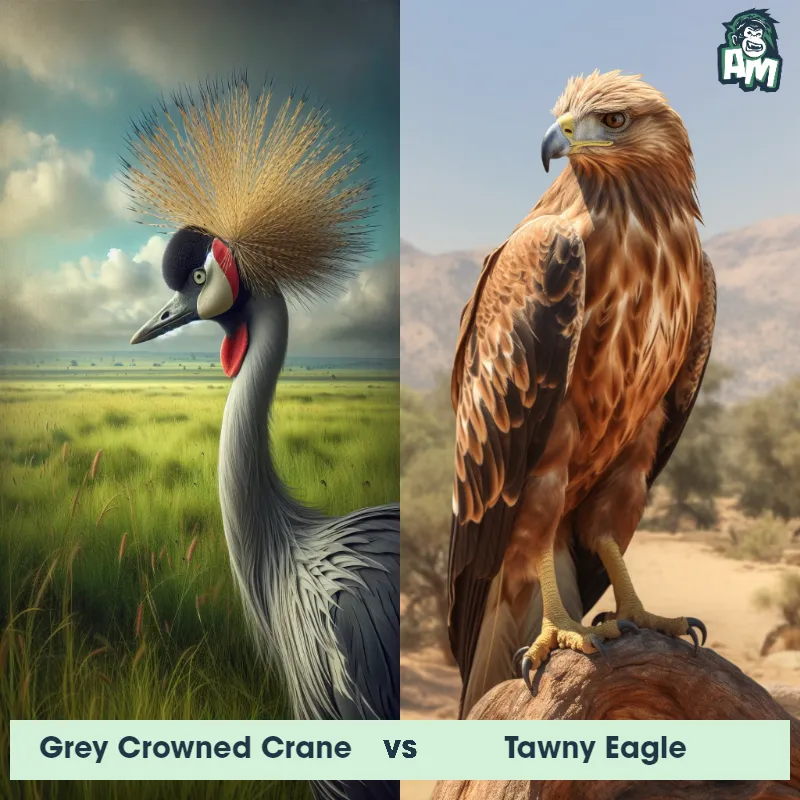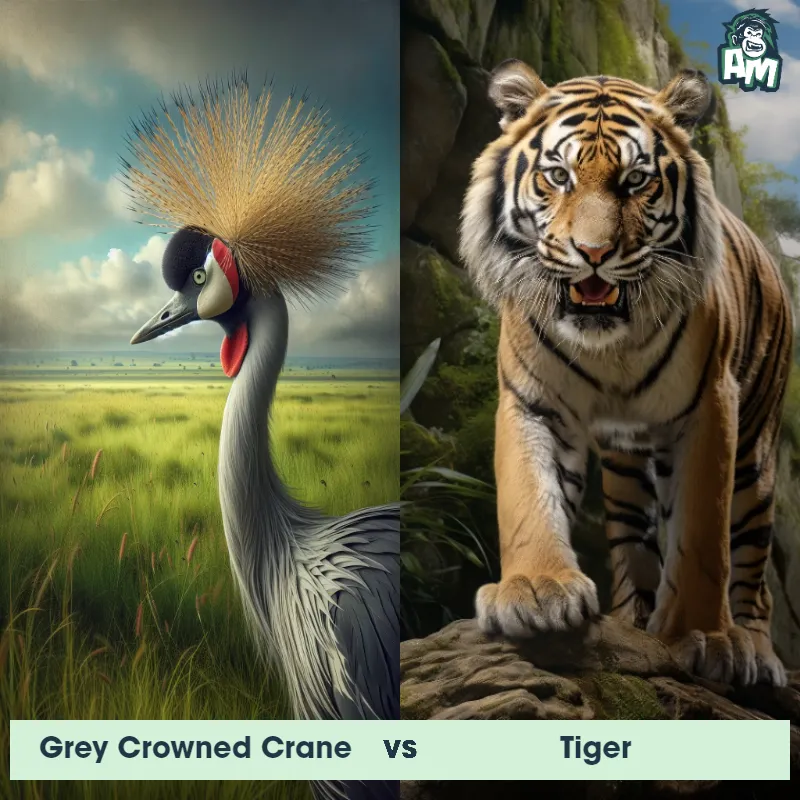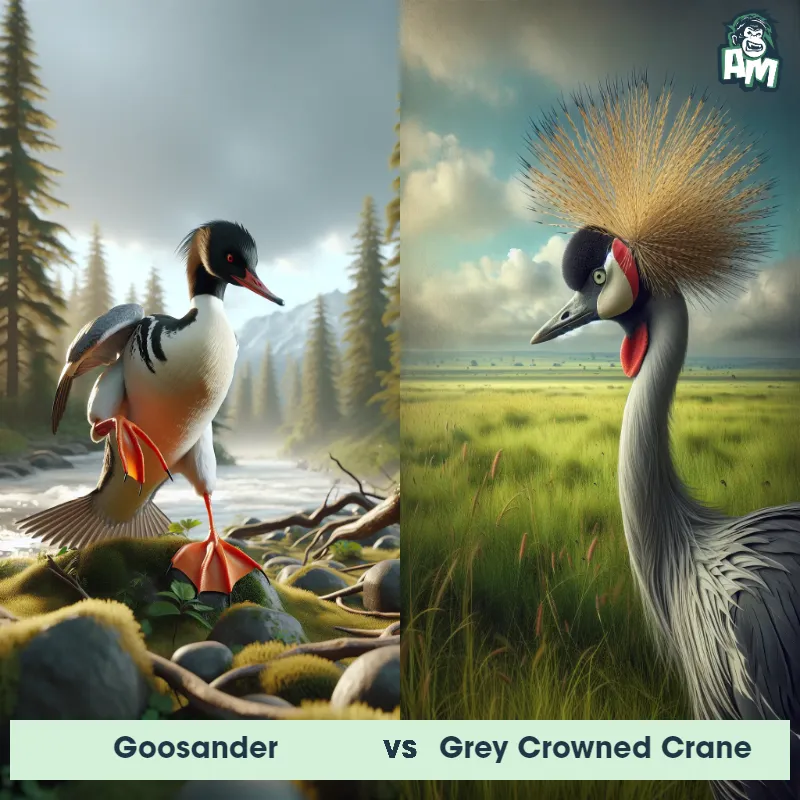The Grey Crowned Crane
The Grey Crowned Crane, also known as Balearica regulorum, is a majestic bird native to Africa. It is easily recognizable by its elegant plumage and distinctive features. The bird stands at an impressive height of about three to four feet, with long legs and a slender body. Its most striking feature is its crown of golden feathers on top of its head, which gives it its name. The Grey Crowned Crane has a primarily gray body with white wings and a black neck. It also has romantic eyes, each adorned with a bright golden patch of skin. This bird is known for its graceful movements and its ability to perform elaborate displays during courtship rituals.

| Grey Crowned Crane | |
|---|---|
| Size | Up to 3 feet (0.91 meters) tall |
| Weight | Up to 8.8 pounds (4 kilograms) |
| Speed | 20mph (32km/h) |
| Key Strength | Agility and long beak for jabbing attacks |
| Biggest Weakness | Vulnerable neck and head |
| Scientific Name | Balearica regulorum |
| Family | Gruidae |
| Habitat | Wetlands, marshes, grasslands, and savannahs |
| Geography | Sub-Saharan Africa |
| Diet | Omnivorous, feeding on seeds, insects, small vertebrates, and aquatic plants |
| Lifespan | 20 years - 25 years |

The Grey Crowned Crane
The Grey Crowned Crane, also known as Balearica regulorum, is a majestic bird native to Africa. It is easily recognizable by its elegant plumage and distinctive features. The bird stands at an impressive height of about three to four feet, with long legs and a slender body. Its most striking feature is its crown of golden feathers on top of its head, which gives it its name. The Grey Crowned Crane has a primarily gray body with white wings and a black neck. It also has romantic eyes, each adorned with a bright golden patch of skin. This bird is known for its graceful movements and its ability to perform elaborate displays during courtship rituals.
Fun Fact: The Grey Crowned Crane is known for its exceptional dancing skills, often indulging in intricate displays during courtship. When trying to impress a potential mate, the crane performs a mesmerizing dance involving bobbing, bowing, jumping, and stretching its wings. These displays not only showcase the bird's agility but also demonstrate its superb balance and coordination.
| Grey Crowned Crane | |
|---|---|
| Size | Up to 3 feet (0.91 meters) tall |
| Weight | Up to 8.8 pounds (4 kilograms) |
| Speed | 20mph (32km/h) |
| Key Strength | Agility and long beak for jabbing attacks |
| Biggest Weakness | Vulnerable neck and head |
| Scientific Name | Balearica regulorum |
| Family | Gruidae |
| Habitat | Wetlands, marshes, grasslands, and savannahs |
| Geography | Sub-Saharan Africa |
| Diet | Omnivorous, feeding on seeds, insects, small vertebrates, and aquatic plants |
| Lifespan | 20 years - 25 years |
Grey Crowned Crane Matchups
We use AI to simulate matchups between the Grey Crowned Crane and other animals. Our simulation considers size, strength, and natural predatory behaviors to determine the most likely outcome.

Can't find the Matchup you want?
Create Your Own MatchupGrey Crowned Crane: Diet, Predators, Aggression, and Defensive Behaviors
What do Grey Crowned Cranes eat?
Grey Crowned Cranes are omnivorous birds and their diet mainly consists of seeds, insects, small mammals, reptiles, and occasionally fruits and small birds. They forage in shallow marshes and grasslands, using their long bills to pick up food from the ground.
Do Grey Crowned Cranes have any predators?
Grey Crowned Cranes do have natural predators such as large birds of prey like eagles and owls, as well as land predators like foxes, jackals, and snakes. They are vulnerable to these predators, especially when they are young chicks.
Are Grey Crowned Cranes aggressive?
Grey Crowned Cranes are not inherently aggressive birds, but they can become territorial during breeding season or when protecting their young. They may display aggression towards perceived threats to their nests or families.
Do Grey Crowned Cranes fight?
Grey Crowned Cranes can engage in fights with each other, especially during territorial disputes or when vying for a mate. These fights may involve aggressive displays, such as fluffing up their feathers, loud calls, and even physical attacks using their sharp beaks.
How do Grey Crowned Cranes defend themselves?
Grey Crowned Cranes have a few defense mechanisms to protect themselves from predators or threats. When faced with danger, they may emit loud calls to alert others in their group, flap their wings to intimidate predators, or even use their sharp beaks to peck at threats.
What is the Grey Crowned Crane's biggest weakness in a fight?
The Grey Crowned Crane's biggest weakness in a fight is their long legs, which can be vulnerable to attacks from predators or aggressive individuals. Their legs are crucial for their mobility and balance, so a well-aimed attack on their legs could incapacitate them in a fight.
Fun Fact: Grey Crowned Cranes are considered one of the oldest existing bird species globally, with fossil evidence indicating their presence dating back 2-5 million years. This makes them living relics and showcases their resilience and adaptability over thousands of years.
Fun Fact: Grey Crowned Cranes are highly sociable birds and are often seen in large flocks or groups. In these communal gatherings, they engage in various activities such as foraging, roosting, and even nesting together. This social behavior helps safeguard the cranes against predators as well as facilitates shared knowledge and protection of resources.



